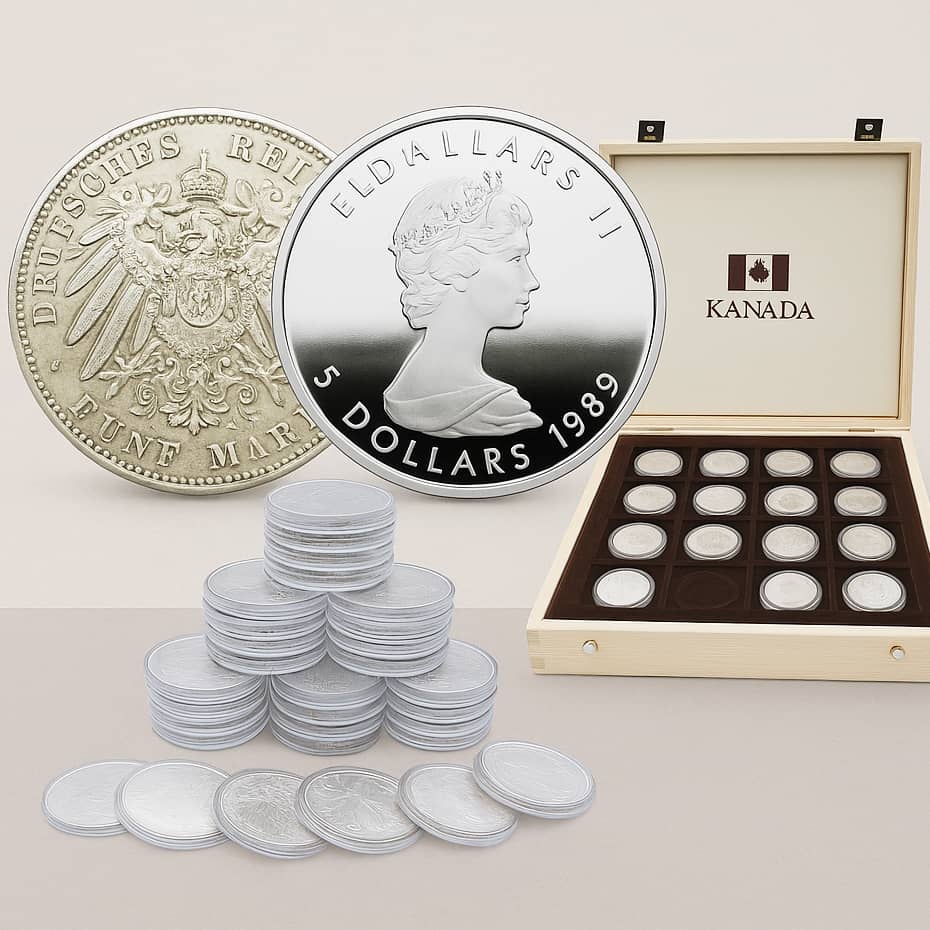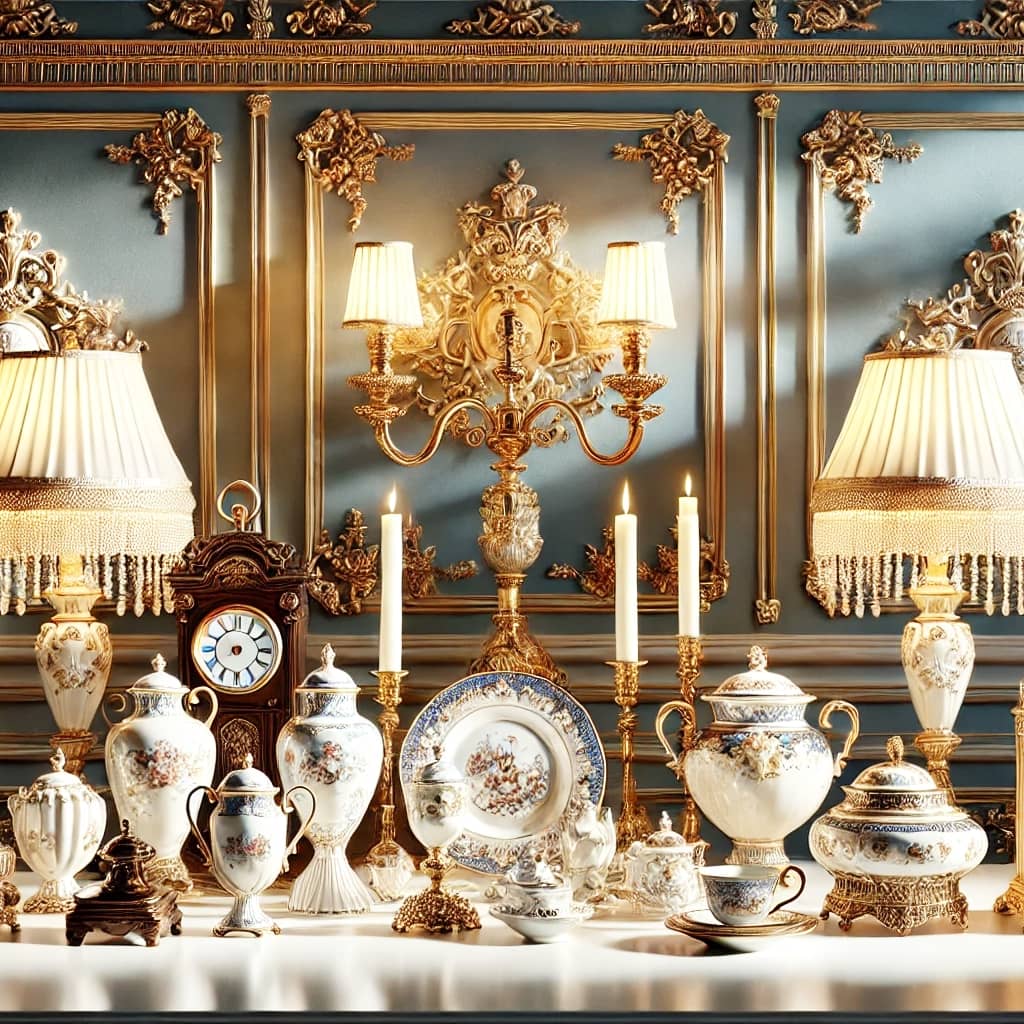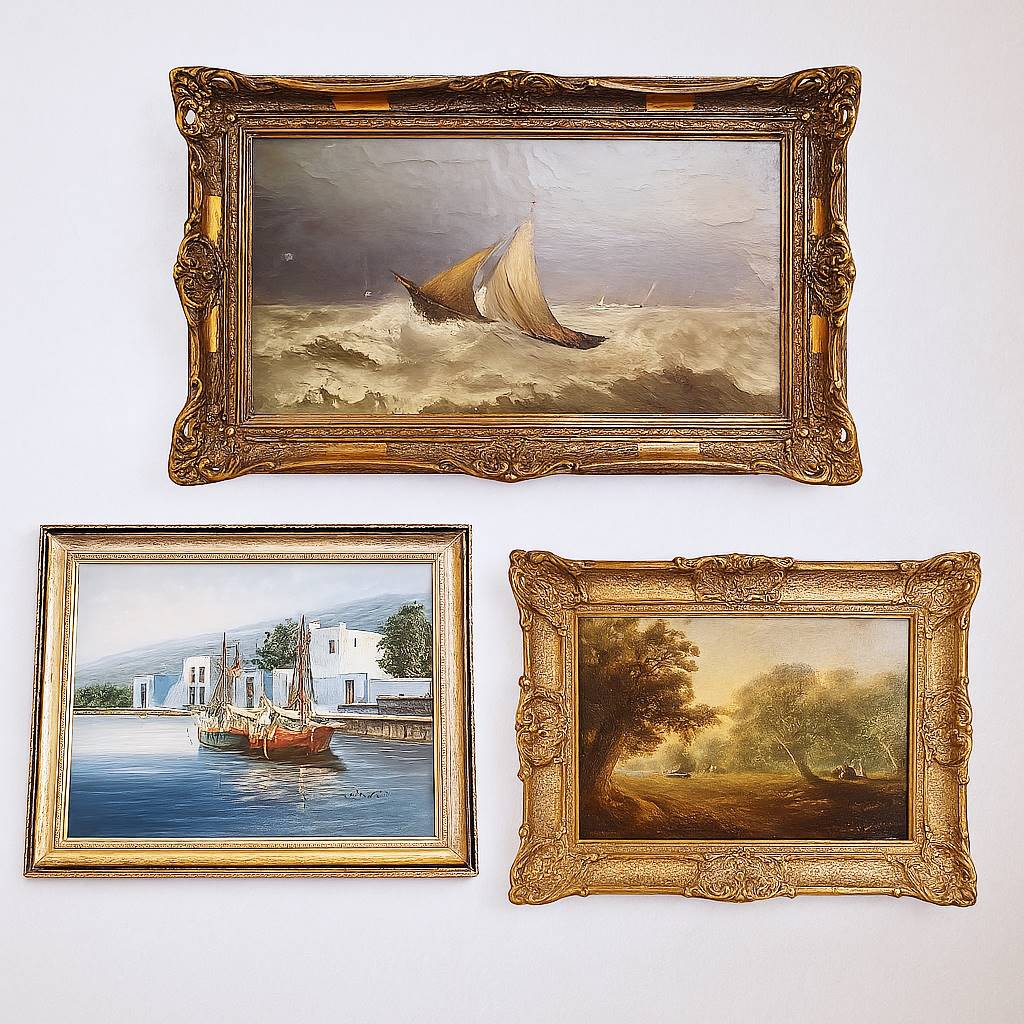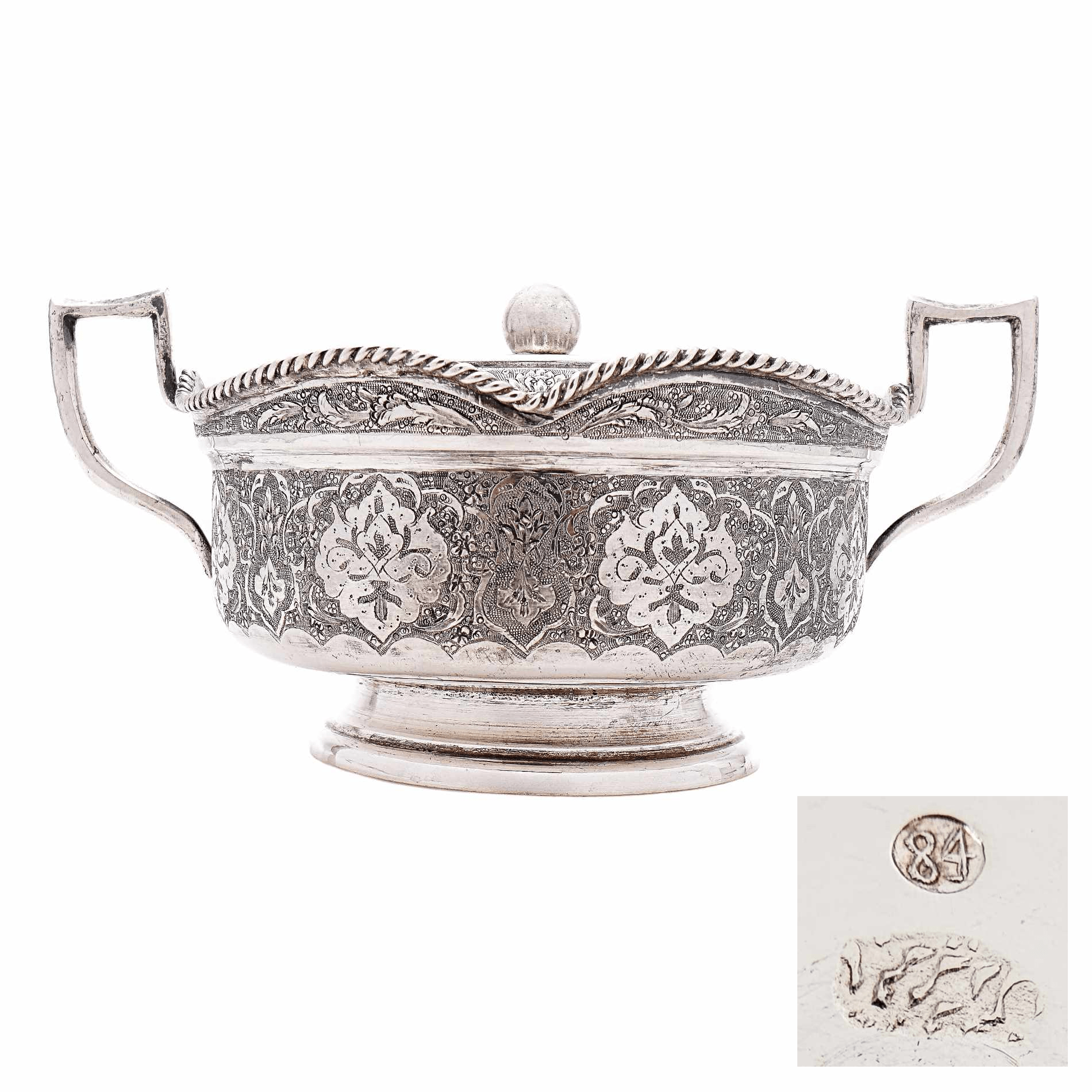Sugar bowl silver – Pahlavi dynasty, Iran Persia
516,90 €
without declared VAT | Differential taxation according to § 25a UStG. plus shipping and handling
Persian sugar bowl from the time of Pahlavi dynasty, with flat lid with ball knob and handles. The rim of the vessel is decorated with a cord band. Appropriately hallmarked with warranty mark and fineness stamp.

Immediately ready for shipment
Delivery time 1 – 3 working days

Free Shipping
Within Germany from €99 order value

One month right of withdrawal
Valid for all products
1 in stock
| Designation | |
|---|---|
| Region | |
| Time | |
| Hallmark | – Master mark Unknown |
| Material | |
| Dimensions | ⌀ 11.0 cm |
| Weight | 240.0 gram |
| State | A |
Information about our condition assessment
A+
The item has no traces of use and is therefore in pristine condition.
This valuation is unusual for antiques and describes an exception rather than the rule.
A
This item has minimal signs of use, such as very fine surface scratches or minimally rubbed gilding.
B+
This item has very few signs of use, such as fine surface scratches, a little rubbed gilding, or a small blemish which is noticeable to a minor degree.
B
This item has few signs of use, such as normal surface scratches, age appropriate rubbed gilding, or a small blemish which is not distractingly noticeable.
C+
This item has normal signs of use, such as normal or deeper surface scratches, a noticeably rubbed gilding, or a blemish which is noticeable.
C
This item has obvious signs of use, such as deeper surface scratches, a heavily rubbed gilding, or a major blemish which is noticeable.
D
This item has very obvious signs of use, such as very deep scratches, heavy wear marks and or damage.
Restored
Is it a restored item? You can find out everything you need to know about restoration here
Persian silversmithing is a fascinating tradition that has a long and rich history. Over centuries, Persian silversmiths have created masterful pieces that are impressive both artistically and in terms of craftsmanship. The art of Persian silversmiths is characterized by its fine detail work, ornate decorations and the use of filigree patterns.
In Persian culture, silver has a special symbolic meaning. It represents purity, splendor and spirituality. Silver jewelry was not only worn as decorative elements, but often passed down through generations as treasures. The Persians used various techniques such as engraving, filigree, enameling and incrustation to create unique pieces.
A famous component of Persian silversmithing are the “toreutics” – elaborate patterns hammered or engraved on metal surfaces. These patterns range from geometric shapes to floral motifs that reflect nature and life.
Today, Persian silversmithing is still highly appreciated and practiced. Both traditional and contemporary silversmiths draw inspiration from the rich history to create works that capture the essence of Persian culture. The art form remains an important part of Iran’s cultural heritage and fascinates people around the world with its timeless beauty and craftsmanship.







